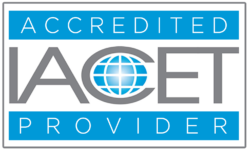All teachers have tucked away in their minds a picture of what their ideal classroom would look like, sound like, and feel like. We all have a mental model of what we want for our students . . . perhaps it’s time to revisit what lies in our brain.
Do you envision ALL of your students learning at high levels? When you go inside your head in your perfect world, are ALL students engaged in learning and actively inquiring, reflecting, and processing new skills and information? Does your vision include a classroom in which differentiation is the norm – where students’ interests, learning styles, and readiness guide the instruction? Are your learning targets very clear to both you and your students? Are you and your students consistently using data to inform next steps? Is instruction aligned with brain research? Are you creating opportunities for students to become self-directed learners? Is your perfect classroom well-managed, full of energy, and enthusiasm?
Our visions for our classrooms are complex, multi-faceted, and challenging; we set the bar high for ourselves. Teaching is not an easy task and achieving our vision stretches us on a daily basis to stay the course.
The Institute for Excellence in Education (IEE) is offering a few tried and true strategies that may help you achieve your vision of excellence.
Air Traffic Controller
Air traffic controllers manage the tower at the airport, directing the order in which planes are to land. In the same way, teachers or facilitators can manage their classrooms. This strategy works well when several individuals or students want to respond to a particular question.
Air Traffic Control works like this:
- Before listening to any responses, the teacher assigns numbers to those with raised hands, and advises students to remember their numbers.
- The teacher then calls on #1 and he or she identifies him/herself and gives a response. Then the teacher calls, “#2?” The person who has been assigned this number identifies him or herself and provides his/her response, and so on.
This strategy works best when the facilitator/teacher does not comment on individual responses. Participants will hear many responses in a short amount of time, and, since individuals know when they will be called, they will be less anxious.
Hold the Elevator
This is a time management strategy that provides a visual to let participants know how much time is left for a particular activity or set of responses.
Hold the Elevator works like this:
When eliciting responses from the group, the facilitator or teacher holds arms straight out in front. He/she gestures by moving the hands closer or farther apart, representing the amount of “space” available for responses. As less time is available, the facilitator moves his/her hands closer together, announcing, “The elevator door is closing.” Often this strategy will “bring out those running to catch the elevator”; in other words, as participants know the time available for responses is limited, it encourages them to share their response.
Modify Modality
Modify Modality is a focusing strategy that causes students to use a new modality . . . to go from auditory learning to visual learning. It is effective in refocusing students so that they look up to see the hand signal from the teachers.
Modify Modality works like this:
When wanting to let students know how much time they have for a task, the teacher raises his/her hand with a number of fingers extended indicating the number of minutes left. Teacher then says to the class, “You have this many minutes left to complete your work.” Students must look up to see how much time is left.
Want more strategies? Let us know and we will be happy to send you additional strategies for your classroom. We would also love to hear from you about your use of these powerful strategies to increase student engagement and manage your classroom.

